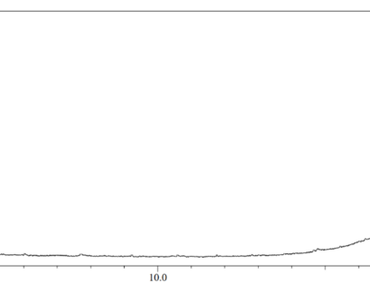Phytochemical screening of genus Cotoneaster through GC–MS profiling: an insight into medicinally relevant compounds
Research Articles | Published: 24 August, 2024
First Page: 2026
Last Page: 2034
Views: 1979
Keywords: n Cotoneastern , GCMS, Bioactive compounds, Therapeutics, Kashmir Himalayas
Abstract
The genus Cotoneaster (Rosaceae) comprises around 300 species globally, some of which have been used in traditional and regional medicine to treat numerous ailments. Although it has widespread use in conventional medicine, very little is known about its bioactive compounds, especially from the Kashmir Himalayan species. Therefore, the current study aimed to evaluate the volatile secondary metabolites through Gas Chromatography and Mass Spectrometry (GC–MS) of the fruit methanolic extracts of four Cotoneaster species viz, Cotoneaster nummularius, Cotoneaster affinis, Cotonesater microphylla, and Cotoneaster confusus growing in the Kashmir Himalayas. Among these species, C. nummularius showed the presence of ten compounds with Eicosanoic acid, methyl ester as the most abundant with a concentration of 70.70%, followed by methyl 20-methyl-heneicosanoate, 11-eicosenoic acid, and cis-methyl 11-eicosenoate with a concentration of 70.70%, 6.84%, 6.68%, and 6.65% respectively. Comparably, C. affinis s methanolic extract revealed the presence of four different bioactive chemicals, viz, Hexane, 1-methoxy representing the most substantial constituent at 20.71% followed by carbonic acid at 20.90%, phosphine at 19.60%, and triacontanoic acid at 19.18%. Similarly, C. microphylla revealed the existence of five different phytochemicals viz., Silane (10.97%), 1R-ethoxy-3-cis-methoxy-2-cis-methylcyclohexane (33.37%), 1,5-anhydro-d-altritol (34.21%), ethyl isopropylamino oximinoacetate (14.63%), and pentadecanoic acid (6.82%). Whereas, five different compounds such as methyl tropate (10.52%), aristol-1(10)-en-9-yl isovalerate (9.28%), 12,12-dimethyl-5,8,11,13,16,19-hexaoxa-12-silatricosane (12.02%), sorbitol (59.60%), and cyclohexanone, 2,6-bis(2-methylpropylidene) (8.58%) were found in the methanolic extracts of C. confusus. The compounds identified have anti-hypertensive, antioxidant, anticancer, anti-inflammatory, antifungal, antimicrobial, mitochondrial-reparative, red blood cell-stabilizing, and antifibrotic activities which affirms the therapeutic potential of these species.

References
Arora S, Kumar G (2018) Phytochemical screening of root, stem and leaves of Cenchrus biflorus Roxb. J Pharmacogn Phytochem 7:1445–1450
Bartish IV, Hylmö B, Nybom H (2001) RAPD analysis of interspecific relationships in presumably apomictic Cotoneaster species. Euphytica 120:273–280
Duke JA (2016) Dr. Duke’s phytochemical and ethnobotanical databases – USDA. https://phytochem.nal.usda.gov/phytochem/search. Accessed 12 Jan 2024
Fu Y, Luo J, Qin J, Yang M (2019) Screening techniques for the identification of bioactive compounds in natural products. J Pharm Biomed Anal 168:189–200
Hummer KE, Jules J (2009) Genetics and genomics of Rosaceae. Springer, New York
Javid W, Nabi G, Wani AA (2023) Assessment of total phenolics, flavonoids, and antioxidant properties within the genus Cotoneaster in Kashmir Himalayas. Vegetos. https://doi.org/10.1007/s42535-023-00744-9
Kicel A, Kolodziejczyk-Czepas J, Owczarek A et al (2018) Polyphenol-rich extracts from Cotoneaster leaves inhibit pro-inflammatory enzymes and protect human plasma components against oxidative stress in vitro. Molecules. https://doi.org/10.3390/molecules23102472
Kicel A, Owczarek A, Gralak P et al (2019) Polyphenolic profile, antioxidant activity, and pro-inflammatory enzymes inhibition of leaves, flowers, bark and fruits of Cotoneaster integerrimus: a comparative study. Phytochem Lett 30:349–355. https://doi.org/10.1016/j.phytol.2019.02.027
Krzemińska B, Dybowski MP, Klimek K et al (2022) The anti-acne potential and chemical composition of two cultivated Cotoneaster species. Cells. https://doi.org/10.3390/cells11030367
Liauw S, Saibil F (2019) Sorbitol: often forgotten cause of osmotic diarrhea. Can Fam Physician 65(8):557–558
Lowe H, Steele B, Bryant J et al (2021) Antiviral activity of Jamaican medicinal plants and isolated bioactive compounds. Molecules 26(3):607
Mhaskar KS, Blatter E, caicus JF (2000) Indian medicinal plants. Orient Enterp 5:1382–1384
Mizushina Y, Tanaka N, Yagi H, Kurosawa T, Onoue M, Seto H, Horie T, Aoyagi N, Yamaoka M, Matsukage A, Yoshida S, Sakaguchi K (1996) Fatty acids selectively inhibit eukaryotic DNA polymerase activities in vitro. Biochim Biophys Acta 1308(3):256–262
Moussaoui F, Alaoui T (2016) Evaluation of antibacterial activity and synergistic effect between antibiotic and the essential oils of some medicinal plants. Asian Pac J Trop Biomed 6:32–37. https://doi.org/10.1016/j.apjtb.2015.09.024
Pereira CB, Pereira de Sá N, Borelli BM et al (2016) Antifungal activity of eicosanoic acids isolated from the endophytic fungus Mycosphaerella sp. against Cryptococcus neoformans and C. gattii. Microb Pathog 100:205–212. https://doi.org/10.1016/j.micpath.2016.09.022
Perry LM, Metzger J (1980) Medicinal plants of east and Southeast Asia: attributed properties and uses. MIT press, Cambridge
Popoviciu DR, Negreanu-Pirjol T, Motelica L et al (2020) Carotenoids, flavonoids, total phenolic compounds and antioxidant activity of two creeping Cotoneaster species fruits extracts. Rev Chim 71:136–142. https://doi.org/10.37358/Rev
Prabhakaran S, Youn Won S, Sun Kim J (2019) Insight on Rosaceae family with genome sequencing and functional genomics perspective. Biomed Res Int 2019:1–12
Ragunathan V, Pandurangan J, Ramakrishnan T (2019) Gas chromatography-mass spectrometry analysis of methanol extracts from marine red seaweed Gracilaria corticata. Pharmacogn J 11:547–554. https://doi.org/10.5530/pj.2019.11.87
Shah W (2020) What is hexane and what is it used for? beyond the magazine. https://beyondthemagazine.com/what-is-hexane-and-what-is-it-used-for/. Accessed 23 Aug 2024
Süntar I (2020) Importance of ethnopharmacological studies in drug discovery: role of medicinal plants. Phytochem Rev 19:1199–1209
Teo G, Suzuki Y, Uratsu SL et al (2006) Silencing leaf sorbitol synthesis alters long-distance partitioning and apple fruit quality. Proceedings of the national academy of sciences 18842–18847
Tran N, Pham B, Le L (2020) Bioactive compounds in anti-diabetic plants: From herbal medicine to modern drug discovery. Biology (basel) 9:1–31
Venn-Watson S, Lumpkin R, Dennis EA (2020) Efficacy of dietary odd-chain saturated fatty acid pentadecanoic acid parallels broad associated health benefits in humans: could it be essential? Sci Rep. https://doi.org/10.1038/s41598-020-64960-y
Xiong Y, Long C (2020) An ethnoveterinary study on medicinal plants used by the Buyi people in Southwest Guizhou, China. J Ethnobiol Ethnomed. https://doi.org/10.1186/s13002-020-00396-y
Yu FR, Lian XZ, Guo HY, McGuire PM, Li RD, Wang R, Yu FH (2005) Isolation and characterization of methyl esters and derivatives from Euphorbia kansui (Euphorbiaceae) and their inhibitory effects on the human SGC-7901 cells. J Pharm Pharm Sci 8(3):528–535
Author Information
Cytogenetics and Plant Molecular Biology Research Laboratory, Department of Botany, University of Kashmir, Srinagar, India